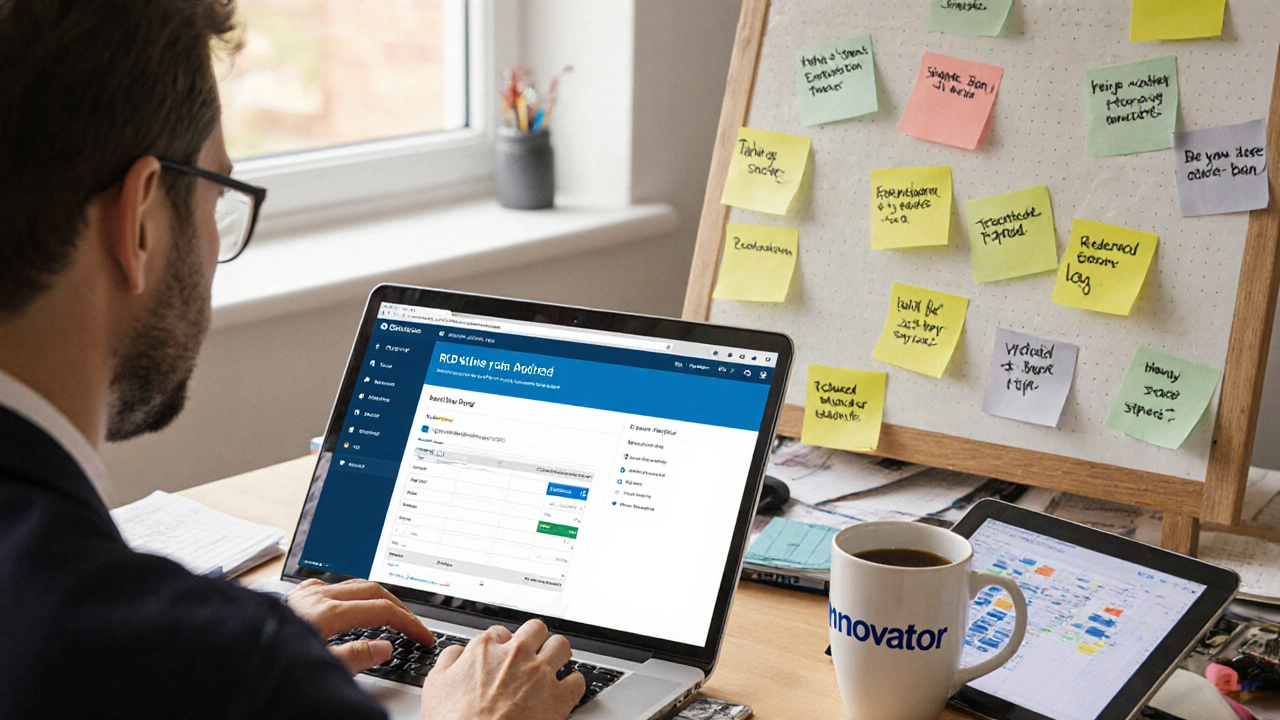Tax Relief for UK Small Businesses: All Available Schemes and How to Qualify
19 Nov, 2025If you run a small business in the UK, you’re probably spending more time on invoices than you are on sleep. And when tax season rolls around, it feels like the government is asking for a cut before you’ve even had a chance to pay your team. The good news? There are real, government-backed tax relief schemes designed exactly for businesses like yours. But they’re not always easy to find - and even harder to qualify for if you don’t know where to look.
What Tax Relief Actually Means for Small Businesses
Tax relief isn’t a handout. It’s not free money. It’s a reduction in the amount of tax you owe - or sometimes, a refund you get after you’ve already paid. For small businesses, this can mean the difference between staying open and shutting down. In 2024, the UK government reported that over 72% of small businesses claimed at least one form of tax relief, saving an average of £8,900 per company. That’s not pocket change. That’s rent, payroll, or new equipment.Most relief comes in three forms: deductions (reducing your taxable profit), tax credits (direct reductions in your tax bill), and allowances (spreading the cost of big purchases over time). You don’t need an accountant to qualify - just the right paperwork and a clear understanding of what’s available.
1. Annual Investment Allowance (AIA)
If you’ve bought equipment - a new till system, a delivery van, computers, or even industrial machinery - the Annual Investment Allowance lets you claim 100% of the cost against your profits in the year you bought it. That means you don’t have to wait years to get the tax benefit.As of 2025, the AIA limit is £1 million per year. This was temporarily raised from £200,000 in 2021 and made permanent in 2023. So if you spent £850,000 on new kitchen equipment for your café or 15 laptops for your remote team, you can write it all off in one go.
To qualify: you must be a sole trader, partnership, or limited company. You must have purchased the equipment for business use. You can’t claim for cars (they have separate rules). And you can’t claim for items bought before you started trading.
2. Research and Development (R&D) Tax Relief
You don’t need to be a tech startup to qualify for R&D relief. If your business is trying to solve a technical problem - even in a simple way - you might be eligible. That includes a bakery developing a new gluten-free recipe, a landscaping company creating a water-saving irrigation system, or a local printer designing a faster binding process.Small businesses (fewer than 500 employees and under €100m turnover) can claim up to 33% of eligible R&D costs as a tax credit. That’s cash back, even if you’re not profitable. In 2024, HMRC paid out over £3.2 billion in R&D relief, with 68% going to SMEs.
Eligible costs include staff wages for time spent on R&D, software licenses used in development, materials consumed in testing, and subcontractor fees. You can’t claim for marketing, patents, or routine quality control.
To qualify: your project must seek to resolve scientific or technological uncertainty. Keep detailed records of what you tried, what failed, and why. HMRC doesn’t ask for lab reports - but they do ask for logs, emails, and meeting notes that prove you were innovating, not just doing your usual work.
3. Flat Rate VAT Scheme (for VAT-registered businesses)
If your business is VAT-registered and you’re making under £150,000 a year in turnover, the Flat Rate Scheme can cut your VAT admin and sometimes your payments. Instead of tracking every input and output VAT, you pay a fixed percentage of your gross sales to HMRC.For example, if you run a small IT consultancy, you pay 14.5% of your turnover as VAT. If you’re a café, you pay 8.5%. The catch? You can’t reclaim VAT on most purchases - except for big-ticket items over £2,000.
Why it helps: You save hours on bookkeeping. Many small businesses end up paying less VAT overall because their costs are low compared to sales. A florist making £120,000 a year with £20,000 in expenses pays just £10,200 in VAT under the flat rate, instead of £18,000 under standard VAT (assuming 20% rate and full input reclaim).
To qualify: your business must be VAT-registered. You can’t be part of a VAT group. You must stay under the £150,000 turnover cap. You can’t join if you’ve been in the scheme for more than a year unless you’ve had a break.

4. Employment Allowance
If you pay employees - even just one - you’re likely paying Class 1 National Insurance Contributions (NICs). The Employment Allowance lets you reduce your employer NICs bill by up to £5,000 per year. That’s like getting a £5,000 tax rebate just for having staff.It applies to limited companies, partnerships, and sole traders with employees. You can’t claim it if you’re a director and the only employee - unless you have another staff member. So if you run a small marketing agency with you and two part-timers, you’re eligible.
It’s automatic if you use payroll software like QuickBooks, Xero, or Sage. HMRC applies it when you submit your PAYE returns. No application needed. Just make sure your payroll system is set up correctly.
5. Business Rates Relief (Non-Domestic Rates)
Business rates are property taxes on commercial spaces - offices, shops, warehouses. If you’re a small business with a property under £51,000 rateable value, you may get Small Business Rate Relief (SBRR).For properties under £12,000 rateable value, you get 100% relief. Between £12,000 and £15,000, relief tapers off gradually. Above £15,000, you get nothing. In 2024, over 1.2 million small businesses in England received this relief, saving an average of £2,800 per year.
Some local councils also offer discretionary relief for charities, community spaces, or businesses in regeneration areas. Check with your local authority - it’s not always advertised.
To qualify: your business must occupy one property only. If you have multiple sites, you usually lose eligibility unless the other properties are under £2,900 rateable value. You must be the ratepayer - not a tenant under a lease that makes the landlord pay.
6. Start-Up Loans and Tax-Free Grants
There’s no direct “start-up tax relief” in the UK, but there are programs that give you cash you don’t have to repay - and that cash can reduce your taxable income.The Start Up Loans program offers up to £25,000 at 6% fixed interest. It’s not tax-free money, but the interest is low and the repayment terms are flexible. You can use it for equipment, inventory, or hiring. The key: you must complete a business plan and training.
Some local councils and business support organizations offer grants - like the UK Shared Prosperity Fund - for businesses in economically depressed areas. These are often tax-free if used for capital investment. But you must apply before spending. Don’t buy equipment first and ask later.
7. Loss Relief: Turning Losses Into Tax Savings
If your business made a loss last year, you can use it to reduce your tax bill this year. This is called loss relief.As a sole trader or partner, you can carry back losses to the previous year and get a refund of tax you already paid. Or carry forward to offset future profits. Limited companies can carry losses forward indefinitely.
For example: your business lost £15,000 in 2024. In 2025, you made £40,000 profit. You can reduce your taxable profit to £25,000. If you’re a higher-rate taxpayer, that saves you £6,000 in income tax alone.
To qualify: you must file your tax return on time. Keep records of all income and expenses during the loss year. HMRC will ask for proof - bank statements, invoices, receipts.

Common Mistakes That Cost Small Businesses Thousands
Many businesses miss out because they make simple errors:- Claiming personal expenses as business costs - like your Netflix subscription or family holiday.
- Not keeping receipts - HMRC doesn’t accept “I remember spending £3,000 on tools.” You need dated invoices.
- Missing deadlines - R&D claims must be filed within two years of the end of your accounting period.
- Thinking you need an accountant - you don’t. HMRC’s online tools are free and clear.
One bakery owner in Manchester claimed £12,000 in R&D for developing a new sourdough starter. HMRC approved it because she kept a journal of fermentation temperatures and yeast strains tested. She got £4,000 back in cash.
How to Get Started: Your Action Plan
1. Review your last 12 months of spending. List every purchase over £500. Did you buy equipment? Pay for software? Hire staff? 2. Check your turnover and rateable value. Go to gov.uk/business-rates to find your property’s rateable value. Check your annual turnover for VAT scheme eligibility. 3. Log your innovation. If you’ve tried something new - even a small tweak to your process - write it down. Date it. Note what you were trying to fix. 4. Use HMRC’s online tools. The R&D relief calculator and Employment Allowance checker take under 5 minutes. 5. File early. The sooner you claim, the sooner you get cash. R&D claims can take 6-8 weeks to process. Don’t wait until March.What If You’re Still Confused?
You don’t need to hire an expensive accountant. Free help is available:- Business Support Helpline: 0300 200 3600 (Mon-Fri, 8am-6pm)
- Local Enterprise Partnerships (LEPs): Offer free advice on grants and relief
- Chambers of Commerce: Host free tax workshops
- HMRC webinars: Free monthly online sessions on tax relief
One thing’s certain: if you’re not claiming at least two of these schemes, you’re leaving money on the table. The government isn’t hiding these benefits - they’re just not shouting about them. You have to go find them.
Can I claim tax relief if I’m self-employed?
Yes. Self-employed individuals can claim the Annual Investment Allowance, Employment Allowance (if you have employees), loss relief, and R&D tax relief. You can’t claim the Flat Rate VAT Scheme unless you’re VAT-registered, but most sole traders aren’t required to register until they hit £90,000 turnover.
Do I need to file a separate form for each tax relief?
No. Most relief is claimed through your annual Self Assessment tax return (for sole traders) or Company Tax Return (for limited companies). R&D claims require a separate technical report, but it’s submitted online via HMRC’s portal alongside your tax return. Employment Allowance is applied automatically through your payroll system.
Can I claim tax relief for home office expenses?
Yes, but only if you use part of your home regularly and exclusively for business. You can claim a portion of your utility bills, broadband, and council tax. HMRC offers a flat rate: £6 per week (or £26 per month) without needing receipts. If you want to claim more, you must calculate actual costs based on room size and usage.
What happens if HMRC audits my claim?
Most audits are just requests for documentation - not accusations. If you’ve kept receipts, logs, and records, you’ll be fine. HMRC’s main concern is whether your claim is reasonable. For R&D, they’ll ask: Did you try something new? Was there uncertainty? Did you document it? If your answer is yes to all three, you’re covered.
Can I claim tax relief if my business isn’t profitable yet?
Yes. Loss relief lets you carry losses back to get a refund of tax paid in previous years. R&D tax credits are paid as cash even if you owe no tax. Employment Allowance reduces your NICs bill regardless of profit. You don’t need to be profitable to benefit.
